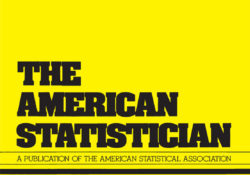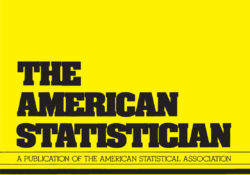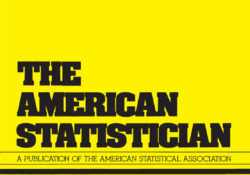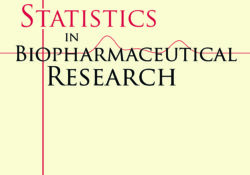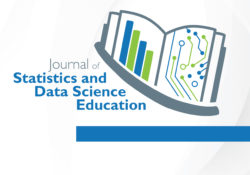eric.ed.gov har udgivet: Recently, the authors have been exploring the use of propensity score methods for developing evidence of program impact. Specifically, they have been developing evidence (after one year of implementation) of the effects of the Math Science Partnership in New York City (“MSPinNYC2”) on high school students’ achievement–both in terms of course grades and scores on end-ofcourse tests in two key Science, Technology, Engineering and Mathematics (STEM) disciplines: Integrated Algebra and Living Environment. Using an evidence-based approach which relies on propensity score matching, the authors asked if the program in its early stages is making a difference in students’ academic achievement and college readiness. The “MSPinNYC2” program restructures early high school STEM courses to include 6-8 Teaching Assistant Scholars (TAS) who, along with the teachers, facilitate in-classroom group… Continue Reading →
Like this:
Like Loading...
tandfonline.com har udgivet en rapport under søgningen “Teacher Education Mathematics”: Abstract Formulae display:?Mathematical formulae have been encoded as MathML and are displayed in this HTML version using MathJax in order to improve their display. Uncheck the box to turn MathJax off. This feature requires Javascript. Click on a formula to zoom. Abstract Statistical inference often fails to replicate. One reason is that many results may be selected for drawing inference because some threshold of a statistic like the P-value was crossed, leading to biased reported effect sizes. Nonetheless, considerable non-replication is to be expected even without selective reporting, and generalizations from single studies are rarely if ever warranted. Honestly reported results must vary from replication to replication because of varying assumption violations and random variation; excessive agreement itself would suggest… Continue Reading →
Like this:
Like Loading...
tandfonline.com har udgivet en rapport under søgningen “Teacher Education Mathematics”: ABSTRACT Formulae display:?Mathematical formulae have been encoded as MathML and are displayed in this HTML version using MathJax in order to improve their display. Uncheck the box to turn MathJax off. This feature requires Javascript. Click on a formula to zoom. ABSTRACT We discuss problems the null hypothesis significance testing (NHST) paradigm poses for replication and more broadly in the biomedical and social sciences as well as how these problems remain unresolved by proposals involving modified p-value thresholds, confidence intervals, and Bayes factors. We then discuss our own proposal, which is to abandon statistical significance. We recommend dropping the NHST paradigm—and the p-value thresholds intrinsic to it—as the default statistical paradigm for research, publication, and discovery in the biomedical and… Continue Reading →
Like this:
Like Loading...
tandfonline.com har udgivet en rapport under søgningen “Teacher Education Mathematics”: ABSTRACT ABSTRACT p-Values and Null Hypothesis Significance Testing (NHST), combined with a large number of institutional factors, jointly define the Generally Accepted Soft Social Science Publishing Process (GASSSPP) that is now dominant in the social sciences and is increasingly used elsewhere. The case against NHST and the GASSSPP has been abundantly articulated over past decades, and yet it continues to spread, supported by a large number of self-reinforcing institutional processes. In this article, the author presents a number of steps that may be taken to counter the spread of this corruption that directly address the institutional forces, both as individuals and through collaborative efforts. While individual efforts are indispensable to this undertaking, the author argues that these alone cannot succeed… Continue Reading →
Like this:
Like Loading...
tandfonline.com har udgivet en rapport under søgningen “Teacher Education Mathematics”: Abstract Formulae display:?Mathematical formulae have been encoded as MathML and are displayed in this HTML version using MathJax in order to improve their display. Uncheck the box to turn MathJax off. This feature requires Javascript. Click on a formula to zoom. Abstract p-Values are viewed by many as the root cause of the so-called replication crisis, which is characterized by the prevalence of positive scientific findings that are contradicted in subsequent studies. The spectrum of proposed solutions includes redefining statistical significance, abandoning the concept of statistical significance, or eliminating the use of p-values altogether. The unintended consequence of these proposals has been confusion within the scientific community, especially in the absence of consensus or clear alternatives. The goal of this… Continue Reading →
Like this:
Like Loading...
tandfonline.com har udgivet en rapport under søgningen “Teacher Education Mathematics”: Abstract Abstract Replication and reproducibility are an important component of scientific research. One reason research is not replicable is the misuse of statistical techniques. Educators can teach the importance of research replication by having students perform a replication study as part of a graduate assistantship or their coursework. In this article, we describe the components of a replication study, the process of conducting a replication study, and how to use the replication process as a teaching tool. Two biostatistics PhD students performed four full replication studies as part of their Graduate Assistantship and another 22 students performed a partial replication as their final project for a biostatistics service course. Students were queried for their feedback about their learning during the… Continue Reading →
Like this:
Like Loading...
